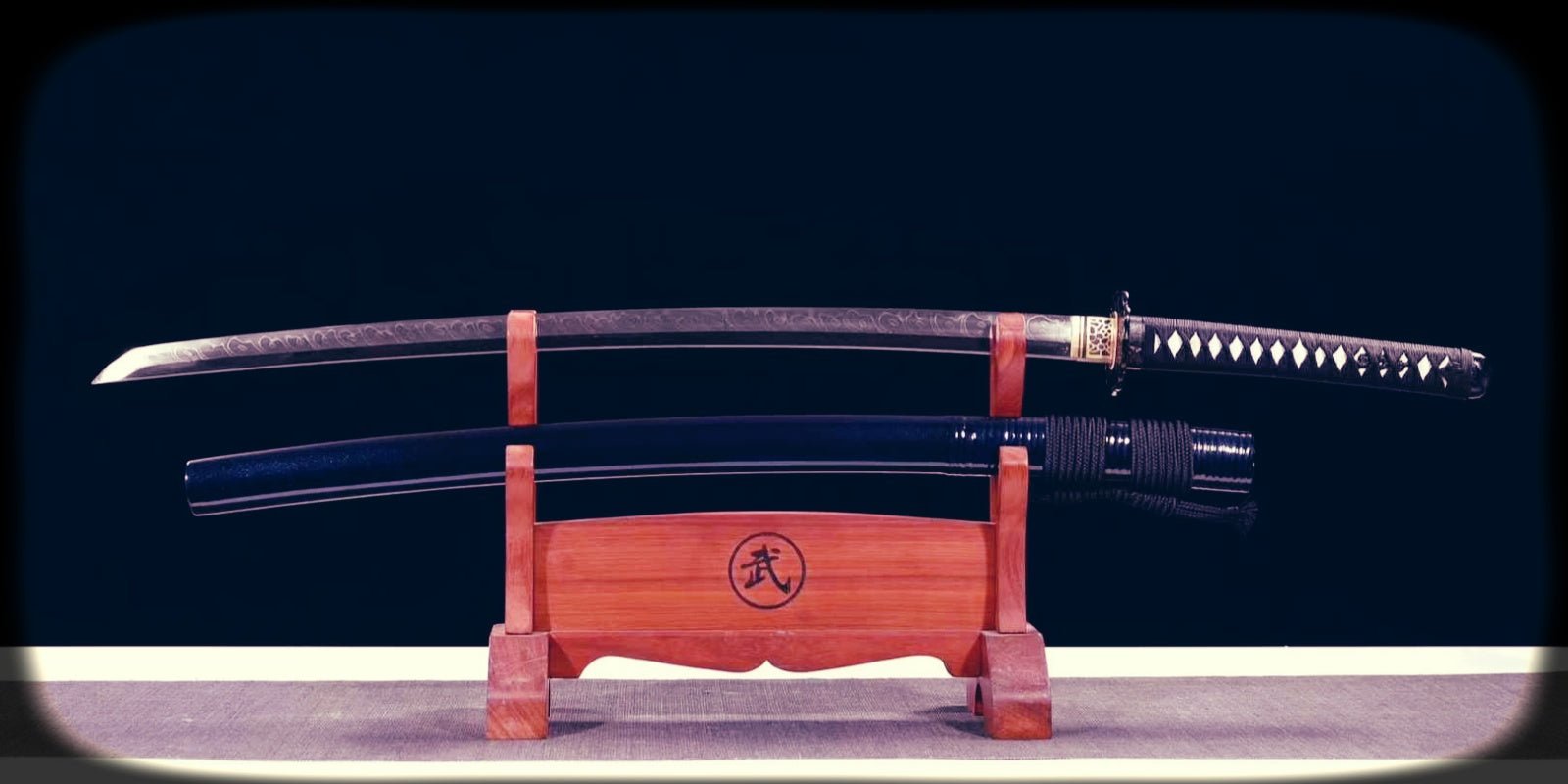Introduction to Clay Tempering and Its Historical Significance
Clay tempering is an ancient metallurgical technique that has been integral to sword-making, particularly in Japan. This process involves coating a blade with a clay mixture of varying thickness before heating and quenching. The method creates a differential hardness between the spine and edge of the blade. The edge, cooled more rapidly, becomes exceptionally hard and sharp, while the spine retains flexibility. Historically, Japanese swordsmiths leveraged this process to craft katana capable of withstanding rigorous combat. Clay tempering not only enhanced functional performance but also introduced the iconic hamon, a wavy pattern that became both a mark of craftsmanship and cultural heritage.
What is Clay Tempering? A Closer Look at the Process
Clay tempering is a traditional Japanese heat treatment method used to enhance a blade's structural performance. This process involves coating the katana with a mixture of clay, water, and ash. The blade's spine receives a thicker clay application, while the edge is coated more thinly. When the blade is heated and quenched, the varied clay thickness controls the cooling rate.
Rapid cooling at the edge creates a harder, sharper surface (martensite), while slower cooling at the spine yields a softer, more flexible core (pearlite). This contrast produces the iconic hamon pattern, symbolizing durability and sharpness.
Understanding the Role of Differential Hardening in Katana Crafting
Differential hardening is a foundational technique in traditional katana crafting. This method involves applying a clay mixture to the blade during the heat treatment process. By varying the clay's thickness, swordsmiths control the cooling rate of different blade sections. The edge, coated with a thinner layer, cools rapidly, forming a harder martensitic structure. In contrast, the spine, covered in a thicker layer, cools slowly, retaining a softer, pearlitic composition.
This duality in hardness enhances the katana’s performance by ensuring a durable, sharp edge while preserving flexibility in the spine. The resulting blade balances strength and shock absorption, essential for combat effectiveness.
The Science Behind Clay Tempering: Heat, Steel, and Transformation
Clay tempering exploits the physical and chemical properties of steel to create a blade with a hard edge and a resilient spine. The process begins with applying a clay mixture of varying thicknesses to the blade—thinner on the cutting edge and thicker along the spine. When the blade is heated to a critical temperature, it enters the austenite phase, during which the steel’s molecular structure becomes uniform.
Quenching in water or oil rapidly cools the blade, causing differential hardening. The fast-cooling edge crystallizes into hard martensite, while the slower-cooling spine forms softer pearlite or ferrite. This duality enhances flexibility and cutting performance.
Hamon: The Aesthetic and Functional Hallmark of Clay Tempering
The hamon, a visible pattern on the blade, is a direct result of the clay tempering process. This distinctive feature emerges where the hard martensite edge meets the softer pearlite body, marking the differential heat treatment. Beyond its visual appeal, it indicates the precise craftsmanship of the swordsmith.
Functionally, the hamon signifies the blade's duality: a cutting edge that offers exceptional sharpness and a resilient spine that absorbs shock. The variations in hamon designs—such as straight (suguha), undulating (midare), or intricate (choji)—highlight the artisan’s skill. It serves as both a protective temper and an emblem of authentic technique, marrying utility with artistry.
How Clay Tempering Enhances Blade Sharpness and Flexibility
Clay tempering is integral to the performance of a katana, particularly in achieving balance between sharpness and flexibility. This traditional method involves coating parts of the blade with clay before quenching, which slows heat dissipation in specific areas.
- Sharpness: The uncovered edge cools rapidly, forming martensite, a hard crystalline structure critical for a razor-sharp edge that maintains its cutting ability over time.
- Flexibility: The clay-covered sections cool more slowly, retaining pearlite, a softer, more ductile structure that absorbs shock without bending or breaking.
By manipulating these properties, the blade achieves both cutting precision and resilience under stress, optimizing its performance in demanding situations.
Durability vs. Fragility: The Balance Achieved Through Clay Tempering
Clay tempering enables artisans to achieve a delicate balance between durability and fragility, critical traits in a katana’s performance. By applying clay selectively during the heat-treatment process, the blade develops a harder edge while maintaining a softer, resilient spine. This differential hardening ensures the edge can sustain sharpness and resist wear, while the spine absorbs impacts and prevents breakage.
The result is a blade capable of withstanding demanding use without compromising on flexibility. This balance gives the katana the ability to deliver powerful cuts while reducing risks of brittleness or deformation, reinforcing its utility as an effective and enduring weapon.
The Cultural and Artistic Value of Clay-Tempered Katanas
Clay-tempered katanas embody a unique intersection of craftsmanship and historical significance. Rooted in centuries-old Japanese sword-making traditions, their creation is considered an art form rather than mere tool-making. The hamon, a distinct wavy line resulting from clay tempering, is revered not only for its structural purpose but also for its aesthetic allure that represents the swordsmith’s skill and creativity. Collectors and martial artists value these swords as cultural artifacts, appreciating their connection to Japanese heritage and the symbolism they carry. Skilled artistry in clay tempering ensures each blade becomes a functional weapon and a timeless masterpiece cherished worldwide.
Comparing Clay Tempering with Modern Tempering Techniques
Clay tempering and modern tempering methods differ significantly in terms of process, application, and results. Clay tempering, a traditional technique, involves covering the blade with a clay mixture to control the rate at which it cools during quenching. This process enhances the katana’s hardness along the edge while retaining flexibility in the spine, creating the iconic hamon pattern.
Modern tempering techniques, such as oil or air quenching, utilize advanced materials and controlled environments. These methods ensure uniform hardness and toughness across the blade but lack the aesthetic and structural variation unique to clay tempering. Each technique serves unique purposes, tailored to specific demands.
The Role of Skilled Swordsmiths in Perfecting Clay Tempering
Skilled swordsmiths play a pivotal role in mastering the intricate art of clay tempering, ensuring a katana achieves its optimal balance of durability and performance. Their expertise involves precise application of clay mixtures to the blade, controlling the cooling rate during quenching to create the desired hardness gradient.
The smith must carefully regulate thickness and placement of the clay, maintaining the blade's symmetry while achieving the signature hamon pattern. This requires a deep understanding of metallurgy, years of hands-on experience, and refined craftsmanship. A swordsmith’s ability to balance aesthetic beauty with structural integrity embodies the tradition of katana-making excellence.
Common Myths and Misconceptions about Clay Tempering
Clay tempering, though admired for its historical and functional significance, is often surrounded by myths and misunderstandings. Addressing these misconceptions is crucial for a realistic understanding of its benefits and limitations.
- Myth: A clay-tempered blade is unbreakable. Fact: While clay tempering provides enhanced flexibility and hardness balance, no blade is entirely immune to breakage under improper use or extreme stress.
- Myth: The hamon strictly indicates blade quality. Fact: The hamon, a visual result of clay tempering, reflects heat treatment. However, it is not a definitive measure of overall blade craftsmanship or durability.
- Myth: Clay tempering is a modern technique. Fact: This method has ancient origins, historically utilized in Japanese swordsmithing as a meticulous heat-treatment process.
Understanding these nuances highlights the realistic capabilities of clay-tempered swords.
How to Identify a Genuine Clay-Tempered Katana
Identifying a genuine clay-tempered katana requires careful examination of key characteristics that result from this traditional forging method. Authentic clay-tempering creates a distinct hamon line—a visible boundary between the harder edge and softer spine. The hamon often displays subtle, natural patterns such as waves or clouds, which are unique to the blade.
Buyers should also inspect the craftsmanship. High-quality clay-tempered katanas typically exhibit excellent polish, with no flaws or irregularities. Authenticity can be confirmed through testing hardness levels; the hardened edge should maintain sharpness while the spine bends slightly under pressure.
Expert consultation or authenticated certifications further ensures legitimacy.
Caring for Your Clay-Tempered Katana to Preserve Performance
Proper care is essential to maintain the performance and longevity of a clay-tempered katana. Regular upkeep prevents degradation and ensures the blade retains its sharp edge and resilient structure.
- Clean After Each Use: The blade must be wiped with a soft, lint-free cloth to remove debris, moisture, and oils that can lead to corrosion.
- Apply Choji Oil: A protective layer of choji oil shields the blade from rust and environmental damage.
- Inspect for Damage: Routinely check for nicks or cracks, especially near the edge, to address issues early.
- Store Correctly: Always store in a dry area within its scabbard, ensuring the blade is not exposed to humidity or excessive heat.
Why Clay Tempering Remains Relevant in Modern Sword Craftsmanship
Clay tempering continues to be a critical technique in sword-making due to its ability to combine both functionality and artistry. This traditional method ensures a high-performance blade by creating differential hardness between the edge and spine, promoting durability without sacrificing flexibility. Craftsmen apply clay carefully to control heat treatment during the forging process, resulting in a katana capable of withstanding heavy impacts while maintaining an incredibly sharp edge.
Modern technological advancements have not overshadowed clay tempering; instead, they complement it by refining precision. The visible hamon, or temper line, remains a hallmark of quality craftsmanship, symbolizing the balance of tradition and innovation.
Conclusion: The Timeless Legacy of Clay-Tempered Katanas
Clay-tempered katanas hold an unparalleled status in the world of sword craftsmanship due to their fusion of artistry and functionality. This meticulous process imparts a dual-hardness structure, with a sharp, hardened edge (ha) for cutting precision and a softer spine (mune) to absorb impact. The distinctive hamon, created through differential cooling, not only enhances aesthetic appeal but also serves as a testament to the blade's meticulous construction.
This ancient technique preserves the katana's revered balance of beauty and durability, ensuring its enduring relevance. As both a weapon and an art form, the clay-tempered katana embodies an intersection of skill, tradition, and timeless innovation.

